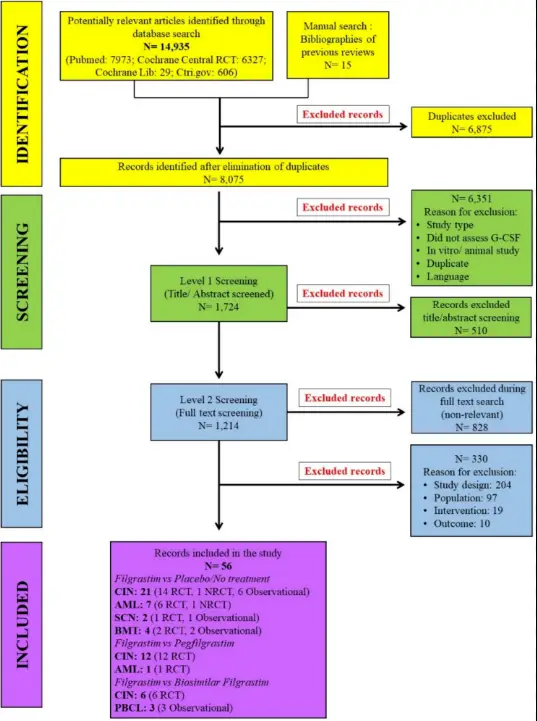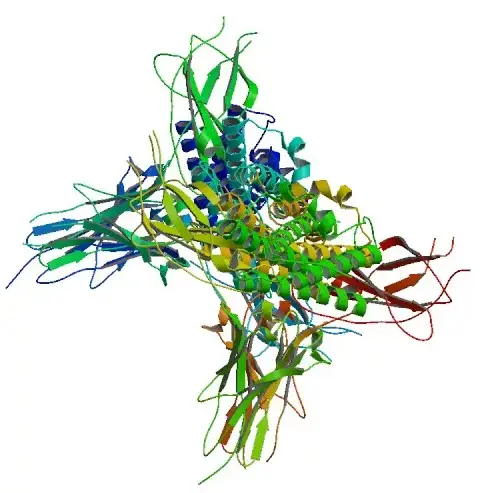Filgrastim and Pegfilgrastim are both critical medications used to stimulate the production of white blood cells, aiding patients who are at a higher risk of infection due to neutropenia, commonly observed in those undergoing certain cancer treatments. Each drug plays a pivotal role in managing side effects of chemotherapy, albeit through slightly different approaches and mechanisms. Understanding their differences is vital for both healthcare providers and patients in choosing the most appropriate treatment option.
The primary difference between Filgrastim and Pegfilgrastim lies in their molecular structure and duration of action. Filgrastim requires daily administration, whereas Pegfilgrastim is a longer-acting form that is typically given once per chemotherapy cycle. This distinction affects not only how each drug is used clinically but also impacts patient experience and overall treatment planning.
Both drugs are forms of granulocyte colony-stimulating factor (G-CSF), which is crucial for the production of white blood cells. While Filgrastim is administered daily until the neutrophil count reaches a safe level, Pegfilgrastim’s extended activity allows for less frequent dosing, which can significantly enhance a patient’s quality of life during treatment. This difference underscores the importance of tailored treatment plans based on individual patient needs and the specific regimen of chemotherapy used.

Drug Profiles
Filgrastim Basics
Definition and Use
Filgrastim is a biologic medication designed to treat neutropenia, a condition characterized by a dangerously low number of neutrophil granulocytes in the blood. This condition is commonly seen in patients undergoing chemotherapy for cancer, which can destroy white blood cells essential for fighting infection. Filgrastim is crucial for preventing infections during the vulnerable periods of cancer treatment.
Mechanism of Action
The mechanism of action of Filgrastim involves stimulating the bone marrow to increase the production of neutrophils. It mimics the natural human granulocyte colony-stimulating factor (G-CSF), a substance that encourages the growth of white blood cells. By binding to specific receptors on the surface of immature blood cells, Filgrastim accelerates their maturation and release into the bloodstream, thereby enhancing the body’s ability to fight infections.
Pegfilgrastim Basics
Definition and Use
Pegfilgrastim is a pegylated form of the growth factor used to treat neutropenia similar to Filgrastim. The primary difference is the addition of a polyethylene glycol (PEG) molecule, which prolongs the drug’s activity in the bloodstream, thus requiring less frequent dosages. This makes it especially valuable for patients looking for convenience and reduced administration frequency during chemotherapy.
Mechanism of Action
Pegfilgrastim’s mechanism of action is similar to that of Filgrastim but is designed to last longer in the body. The pegylation process decreases the rate of renal clearance and proteolytic degradation. This means that Pegfilgrastim remains active longer, maintaining adequate neutrophil levels with fewer doses compared to its non-pegylated counterpart.
Key Differences
Chemical Structure
Comparison of Molecular Structures
The molecular structure of Filgrastim and Pegfilgrastim differs primarily due to the pegylation in Pegfilgrastim. While both drugs are based on the same foundational protein, the addition of a PEG molecule in Pegfilgrastim alters its physical and chemical properties, leading to differences in pharmacokinetics and dosing schedules.
Pharmacokinetics
Absorption and Half-life
Filgrastim is rapidly absorbed and eliminated from the human body, with a half-life of about 3 to 4 hours, necessitating daily injections. In contrast, Pegfilgrastim has a significantly extended half-life of 15 to 80 hours, allowing for a single injection per chemotherapy cycle. This difference is primarily due to the pegylation, which enhances its stability and reduces renal clearance.
Efficacy
Comparative Studies and Results
Multiple studies have demonstrated that Pegfilgrastim is as effective as daily Filgrastim in preventing severe neutropenia in cancer patients. However, the convenience of fewer injections and sustained efficacy makes Pegfilgrastim a preferred option in many clinical settings. Patients receiving Pegfilgrastim show similar or fewer episodes of febrile neutropenia compared to those receiving daily Filgrastim.
Side Effects
Common and Severe Reactions
Both medications share similar side effect profiles, including bone pain, headaches, and local injection site reactions. However, due to its extended activity, Pegfilgrastim may be associated with prolonged duration of bone pain. Rare but severe complications like splenic rupture and allergic reactions have been reported with both drugs and require immediate medical attention.
Clinical Applications
Filgrastim Applications
Approved Indications
Filgrastim is approved for any condition leading to acute neutropenia, such as:
- Chemotherapy-induced neutropenia
- Chronic neutropenia
- Neutropenia associated with bone marrow transplant
Dosage Forms
Filgrastim is available in various forms including:
- Prefilled syringes
- Multi-dose vials
Pegfilgrastim Applications
Approved Indications
Pegfilgrastim is specifically approved for use in patients undergoing chemotherapy that is known to cause severe neutropenia. It is not indicated for chronic neutropenia.
Dosage Forms
Pegfilgrastim is available primarily in:
- Single-dose prefilled syringes
- On-body injectors for continuous administration
Cost Analysis
Price Comparison
When evaluating the cost-effectiveness of Filgrastim versus Pegfilgrastim, the decision is not just about the price per dose but also about the frequency of dosing and the overall treatment regime. Typically, Filgrastim is less expensive per dose compared to Pegfilgrastim. However, since Filgrastim often requires daily administration for several days during each chemotherapy cycle, the total cost can accumulate, potentially matching or surpassing the single-dose cost of Pegfilgrastim.
Insurance Coverage and Accessibility
Insurance coverage plays a crucial role in the accessibility of these medications. Most insurance plans, including Medicare, generally cover both Filgrastim and Pegfilgrastim, but the coverage levels and out-of-pocket costs can vary significantly:
- Co-pays and deductibles: Patients may face different out-of-pocket expenses based on their insurance plan.
- Prior authorization: Some insurers require prior authorization for Pegfilgrastim due to its higher per-dose cost.
- Formulary status: Drugs included in insurance formularies are typically available at a lower cost to patients.
Access to these drugs is also influenced by regional healthcare policies and availability, which can affect how quickly patients can receive their medications.
Patient Considerations
Choosing Between Filgrastim and Pegfilgrastim
The choice between Filgrastim and Pegfilgrastim should consider several factors:
- Treatment schedule: Pegfilgrastim’s less frequent dosing is often more convenient for patients.
- Patient mobility: For patients with mobility issues, fewer clinical visits (required by Pegfilgrastim’s dosing schedule) can be beneficial.
- Overall health: The patient’s overall health and their ability to tolerate frequent injections might sway the decision.
Patient Experiences
Case Studies and Testimonials
Patient testimonials and case studies highlight the practical experiences of those who have used these medications:
- Case Study 1: A patient with breast cancer experienced significant lifestyle improvement with Pegfilgrastim due to less frequent dosing, which allowed for greater personal time and less disruption to her daily life.
- Case Study 2: Another patient reported preferring Filgrastim despite the daily injections because it was better covered under his insurance plan, reducing his financial burden.
These real-world insights show how personal and financial circumstances can influence treatment choices.
Industry Impact
Market Trends
The market for neutropenia treatments has been growing, driven by the increasing prevalence of cancer and the expanded use of chemotherapy. This growth is fueled by:
- Innovations in drug delivery: Newer forms of administration, such as on-body injectors for Pegfilgrastim, provide more options for patients.
- Biosimilars: The introduction of biosimilar forms of both drugs has begun to influence pricing and accessibility.
Future Research Directions
Ongoing research in the field of neutropenia treatment is focusing on several areas:
- Extended-release formulations: These could potentially reduce dosing frequency even further, enhancing patient convenience.
- Combination therapies: Combining G-CSF drugs with other treatments to enhance efficacy or mitigate side effects.
- Genetic tailoring: Research into how genetic differences affect drug efficacy and side effects could lead to more personalized treatment plans.
This ongoing innovation and research ensure that the treatment of neutropenia will continue to evolve, potentially offering more effective and patient-friendly options in the future.
Frequently Asked Questions
What is Filgrastim?
Filgrastim is a biologic drug used primarily to increase white blood cell counts in patients undergoing chemotherapy, reducing the risk of infection. It mimics the natural growth factor that stimulates the bone marrow to produce more neutrophils.
How does Pegfilgrastim work?
Pegfilgrastim functions similarly to Filgrastim but has a modified structure that prolongs its effect in the body, thus requiring less frequent administration. This modification allows for sustained stimulation of the bone marrow over a longer period.
When is Filgrastim prescribed?
Filgrastim is typically prescribed for patients experiencing neutropenia following chemotherapy, to accelerate the recovery of neutrophil counts and reduce the duration of associated risks.
What are the side effects of Pegfilgrastim?
Common side effects of Pegfilgrastim include bone pain and mild swelling at the injection site. Although rare, it can also cause more severe reactions, which should be immediately reported to a healthcare provider.
Can children use Filgrastim and Pegfilgrastim?
Yes, both Filgrastim and Pegfilgrastim are approved for use in children who need to increase their neutrophil counts due to conditions like congenital neutropenia or following chemotherapy.
Conclusion
In conclusion, while both Filgrastim and Pegfilgrastim serve the essential function of boosting neutrophil counts in patients susceptible to infections, their usage and administration schedules differ significantly. This distinction highlights the importance of understanding each drug’s specific attributes and the potential impact on treatment outcomes. Choosing the right medication should always be guided by a comprehensive evaluation of the patient’s overall health, treatment needs, and lifestyle considerations.
The choice between Filgrastim and Pegfilgrastim should be made with a clear understanding of each drug’s mechanism of action and the patient’s specific medical condition and chemotherapy regimen. As advances in medical research continue to evolve, so too will the strategies for managing neutropenia, potentially leading to new therapies and methods of application that further enhance patient care and quality of life.

